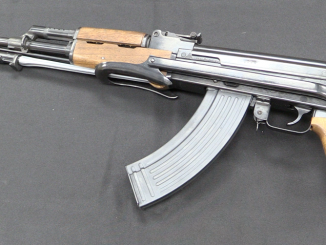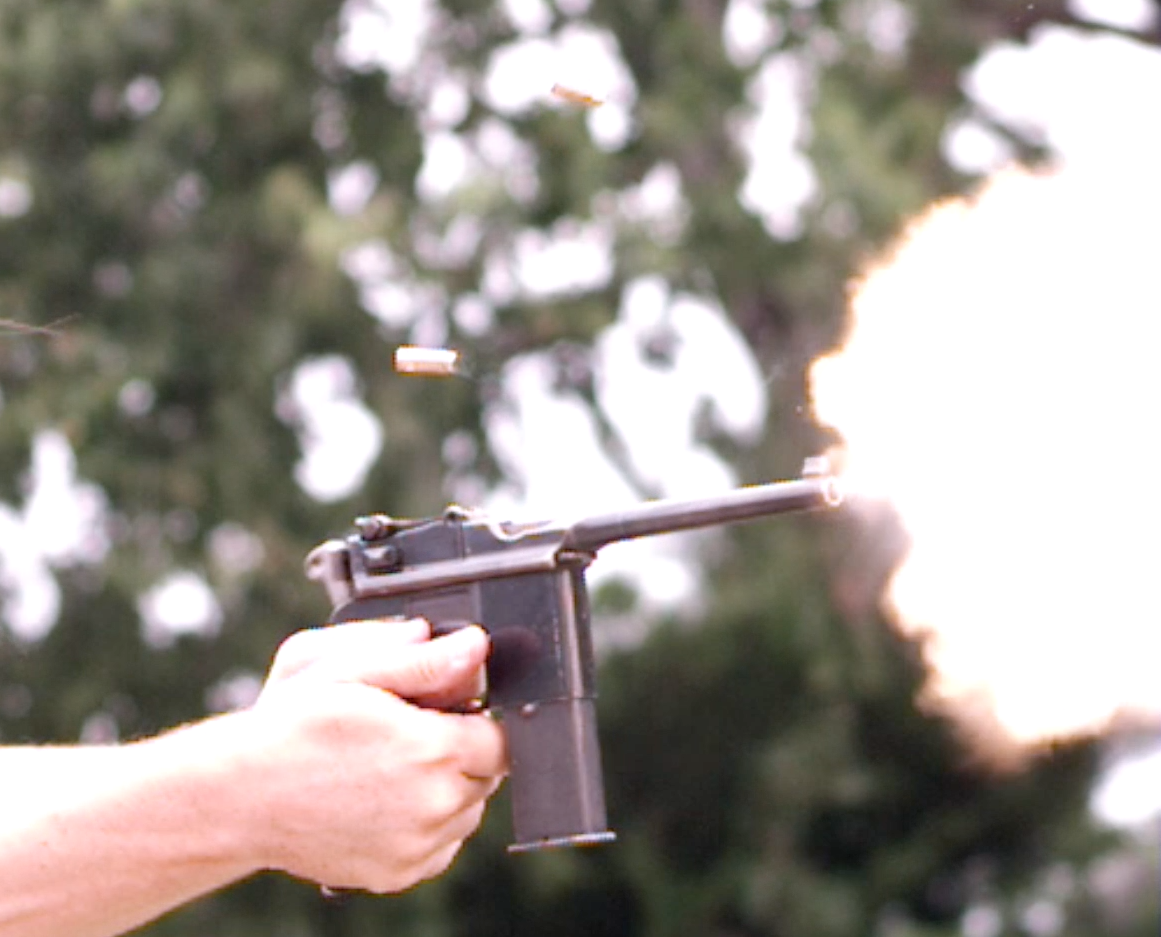It’s not too late to get in on the Kickstarter for Pistols of the Warlords!
One of the biggest arsenals in China in the 20th century was the Hanyang Arsenal, built in 1890 by the Qing dynasty to help modernize China’s military. The fist rifle to be made there was a copy of the German Gewehr 88 commission rifle (designated Type 88), which began production in 1895. A few changes were made early in production, with the barrel shroud deleted in 1904 and the rear sight changed form a ladder type to a tangent type in 1910. After this, production would remain basically the same through the end of production in 1944. In total, some 1,083,000 examples were made over nearly 50 years of production.
A major shift in production occurred in 1938, when the Hanyang Arsenal had to be evacuated to avoid the advance of Japanese troops. At that time it was renamed the 1st Arsenal, and its rifle production machinery was transferred to the 21st Arsenal. The Type 88 rifle was renamed the Type Han at that point, and production from 1939 until 1944 took place at the 21st Arsenal (ending when that facility transitioned to production of the Chiang Kai-Shek rifle instead). These 21st Arsenal rifles (or which some 207,000 were made in those 5 years) can be identified by the left-handed swastika used as the arsenal’s symbol, as opposed to the 5-pointed star used by the Hanyang Arsenal.
The Type 88/Type Han was made to use the same clips as the Gewehr 88, and chambered for the .318” round nosed 8mm Mauser ammunition. This ammo was in production in China through the end of the 1930s, and there was not a systematic effort to rechamber the rifles for a Spitzer version of the cartridge, as there was in Germany. That said, some were converted here and there, and some were also captured and converted to single shot use as trainers by the Japanese military.




Excellent video of fascinating rifle. I have two of these 21st Arsenal Rifles from 1940. I also have Mr. Goldsmith’s booklet along with an article Banzai printed years ago and I a little forum on Chinese firearms also. https://oldchinesefirearms.proboards.com/
I presume that a certain Mr Ferdinand Mannlicher was not in on the transaction to build the Gewehr 1888 in China. As far as I can tell from literature the Germans were allowed to use the Mannlicher en-bloc clips in the Gewehr 1888 in exchange for Steyr having the exclusive rights to build the Schlegelmilch bolt action outside of Germany.
Kinda. In December 1888 the Spandau rifle factory signed a contract with Mannlicher that allowed the Prussian Military Administration to use his magazine system in the G.88 rifle. They paid him 300,000 Marks – a huge sum. When Saxony started to produce the rifles Mannlicher tried to claim that as a “foreign” country they owed him too!
The real winners in sales to China were the dealers and middlemen like Bruno Spiro and Moritz Magnus in Hamburg and Auguste Schriever from Liege and Dusseldorf. In April 1891 ŒWG sold 10,000 G.88 rifles to Schriever that were made up from parts “left over” from a substantial contract to supply Germany. Schriever sold these rifles on to an unknown destination -probably China – at what was probably a handsome profit
the hole in the fore end is likely for a mono- or bipod, often home-made. I have a Tibetan Standard Modell Mauser that is so modified and have seen pics of these ingenious contraptions on Mauser, Mosins and Enfields
Tibet seems to have a long tradition of extravagant-looking bipods:
https://www.metmuseum.org/art/collection/search/755339
https://commons.wikimedia.org/wiki/File:Tibetan_Soldier_at_Target_Practise.jpg
I always think of high adventure whenever I see one of these rifles. Thank you, Ian!
“The swastika symbol, 卐 (right-facing or clockwise) or 卍 (left-facing, counterclockwise, or sauwastika), is an ancient religious icon in the cultures of Eurasia. It is used as a symbol of divinity and spirituality in Indian religions, including Hinduism, Buddhism and Jainism.
In the Western world, it was a symbol of auspiciousness and good luck until the 1930s when the right-facing tilted form became a feature of Nazi symbolism as an emblem of the Aryan race. As a result of World War II and the Holocaust, many people in the West still strongly associate it with Nazism and antisemitism. The swastika continues to be used as a symbol of good luck and prosperity in Hindu, Buddhist and Jain countries such as Nepal, India, Mongolia, Sri Lanka, China and Japan. It is also commonly used in Hindu marriage ceremonies.”
The US 45th infantry Division haled from Oklahoma (the former Indian Territory), Colorado, New Mexico and Arizona and adopted an ancient American Indian symbol,
https://upload.wikimedia.org/wikipedia/commons/d/db/1907_Postcard_with_Navajo_Swastica_Good_Luck.jpg
the swastika, as its shoulder patch as it had many American Indians in its ranks. Due to events in Europe, it switched to another potent American Indian symbol, the Thunderbird, as WW2 approached
https://en.wikipedia.org/wiki/45th_Infantry_Division_(United_States)#/media/File:45th_Infantry_insignia_(thunderbird).svg
http://45thdivisionmuseum.com/index.php/history/from-swastika-to-thunderbird/#:~:text=The%20insignia%20served%20as%20recognition%20of%20the%20great,of%20the%2045th%E2%80%94Oklahoma%2C%20New%20Mexico%2C%20Colorado%2C%20and%20Arizona.
Some good histories of the symbol
https://www.historyextra.com/period/second-world-war/how-why-sanskrit-symbol-become-nazi-swastika-svastika/
https://en.wikipedia.org/wiki/Swastika
The 45th’s experience was echoed in Britain, where the Commandos were grouped in four Special Service Brigades. The name was hurriedly changed to Commando Brigades when Churchill found reference to “SS Brigades” in official correspondence. One imagines he issued one of his famous “Action This Day” memos with some superb Churchillian prose.
Saint Brigid’s cross, remains as a currently popular European religious form of the traditional (Neolithic or earlier) Eurasian symbol.
To be precise, the rilfe showed here, produced in the Arsenal 21 since year 1939, series no. 41500~, should be Type 79 (or Type Han 79 ), not type 88.